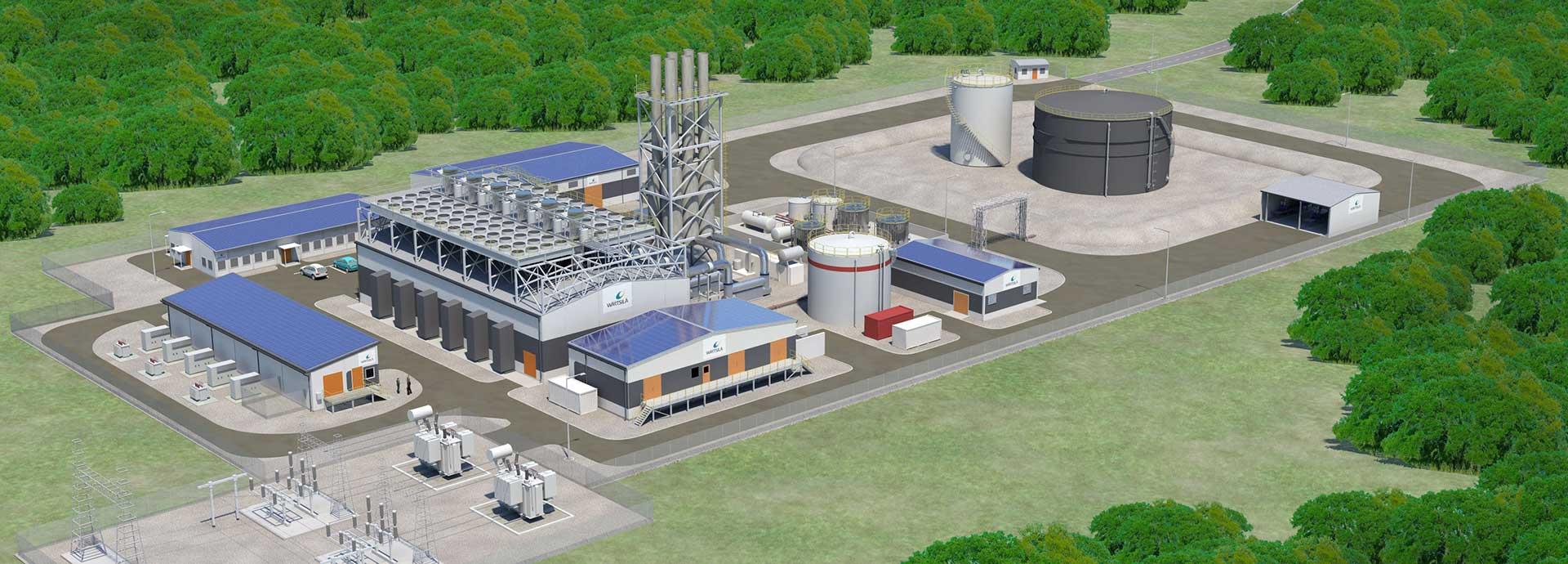

"Combining combustion engines and energy storage is a winning formula for Wärtsilä. We tell you why."
The Future of Energy is Hybrid. Case in point: fast-starting, gas-fired internal combustion engines – integrated with an energy storage – offer considerable potential for fuel and cost savings. Especially in remote areas, such as islands and isolated grids where fuel prices are generally high, these types of integrated hybrid power plants hold great promise.
Hans-Alexander Öst, Project Manager, Energy Solutions at Wärtsilä, explains that traditionally, in isolated grids, there is a need to operate power plants on partial load for spinning reserve purposes.
“However, the integration of energy storage into an internal combustion engine power plant will nearly eliminate this need. By using the energy storage capacity as spinning reserve, the thermal generation can be operated on higher load with better fuel efficiency and with less engines running,” says Öst.
Reserve Power
In case of disturbances in the network – or even within the power plant – the energy storage has the potential to power the system until a stand-by unit is ready to take the required load from the energy storage. In cases involving solar PV generation, ‘the internal combustion engine + energy storage’ hybrid solution can, conceivably, provide an energy reserve, for example, in case of clouding.
“An additional benefit with a multi-unit installation of fast-starting engines is that the size of the energy storage solution can be optimised,” says Öst, who has 10 years of experience in delivering engine-based power plant projects to Wärtsilä’s customers.
The upside of hybrid power plants, he says, is truly exciting, since they can help Wärtsilä enhance the performance, reduce fuel consumption and reduce maintenance costs via integration.
“The short payback time and the annual savings achieved by combining these two assets makes it an exciting new way of optimising the power plant. This way, we can reduce customers’ operating costs.”
“Additionally, by optimising the engine power plant and the energy storage to function as a superior hybrid power plant, Wärtsilä can further improve the flexibility and the performance of the hybrid plant thus providing additional value for the customer,” he explains.
Green and Lean
During the past decade, the demand for “greener” electricity production has been constantly on the rise. Öst says this is normally achieved by adding renewable generation to the system – but that’s not the only way. Greener electricity can be achieved also by adding energy storage to thermal power plants.
“According to our case studies, annual fuel savings of 6% could be reached by adding only energy storage, thus also reducing the emissions of the power plant.”
Öst points out that there is currently a ‘clear case’ for the integration of renewable generation to thermal generating systems and for further optimising and integrating all assets with energy management systems. With the available energy storage technologies and their decreasing prices, there is little doubt that hybrid power plants with energy storage will be a force to reckon with.
“Li-Ion battery prices have come down quite a lot during the last years, mostly thanks to the car industry which has driven the development of the batteries forward for their electric and hybrid cars.”
The hybrid concept is fairly a new one and the markets are just about starting to recognise the potential in properly combining thermal units with energy storage. Nevertheless, as renewable generation keeps entering new markets, the energy sector creates even bigger demand for flexible, fast, reliable and affordable electricity generation. That spells huge potential for Wärtsilä’s winning formula.


